Is Anti-Gravity Real? Science Is About To Find Out

If antimatter falls up instead of down, countless sci-fi dreams will become scientific reality.
One of the most astonishing facts about science is how universally applicable the laws of nature are. Every particle obeys the same rules, experiences the same forces, and sees the same fundamental constants, no matter where or when they exist. Gravitationally, every single entity in the Universe experiences, depending on how you look at it, either the same gravitational acceleration or the same curvature of spacetime, no matter what properties it possesses.
At least, that’s what things are like in theory. In practice, some things are notoriously difficult to measure. Photons and normal, stable particles both fall as expected in a gravitational field, with Earth causing any massive particle to accelerate towards its center at 9.8 m/s². Despite our best efforts, though, we have never measured the gravitational acceleration of antimatter. It ought to accelerate the exact same way, but until we measure it, we can’t know. One experiment is attempting to decide the matter, once-and-for-all. Depending on what it finds, it just might be the key to a scientific and technological revolution.
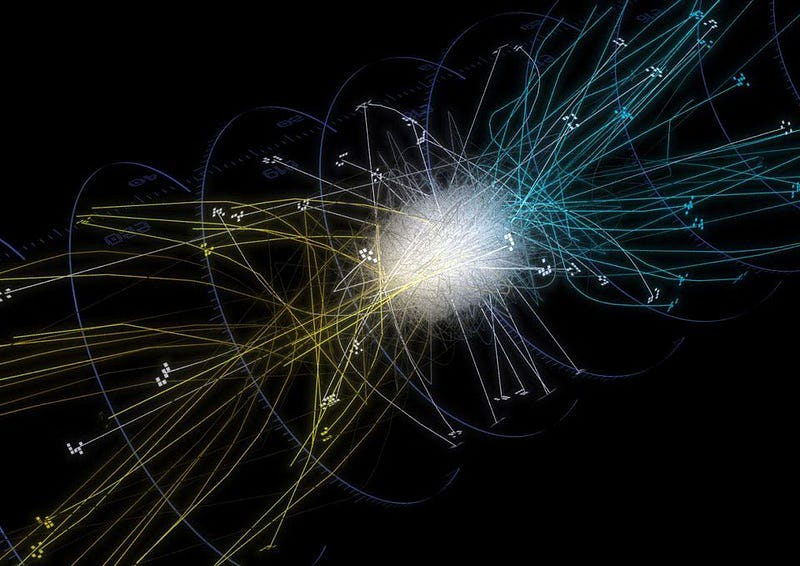
You might not realize it, but there are two entirely different ways of thinking about mass. On the one hand, there’s the mass that accelerates when you apply a force to it: the m in Newton’s famous equation, F = ma. This is the same as the m in Einstein’s E = mc², which tells you how much energy you need to create a particle (or antiparticle) and how much energy you get when you annihilate it away.
But there’s another mass out there: gravitational mass. This is the mass, m, that appears in the equation for weight at Earth’s surface (W = mg), or in Newton’s gravitational law, F = GmM/r². For normal matter, we know that these two masses — inertial mass and gravitational mass — must be equal to something like 1 part in 100 billion, thanks to experimental constraints from a setup designed over 100 years ago by Loránd Eötvös.
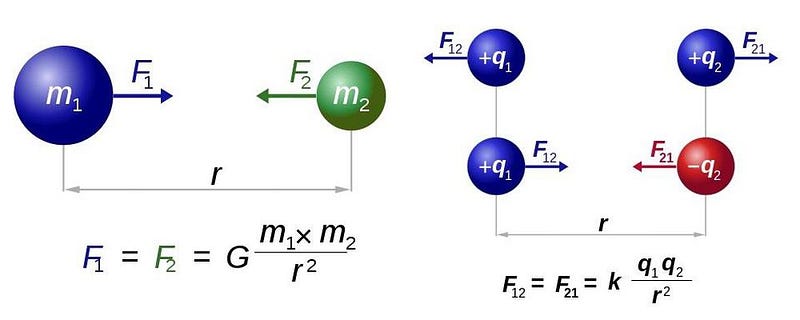
For antimatter, though, we’ve never been able to measure this at all. We’ve applied non-gravitational forces to antimatter and seen it accelerate, and we’ve created and annihilated antimatter as well; we’re certain how its inertial mass behaves, and it’s exactly the same as normal matter’s inertial mass. Both F = ma and E = mc² work just the same for antimatter as they do for normal matter.
But if we want to know how antimatter behaves gravitationally, we can’t just go off of what we theoretically expect; we have to measure it. Fortunately, there’s an experiment that’s running now which was designed to do exactly that: the ALPHA experiment at CERN.
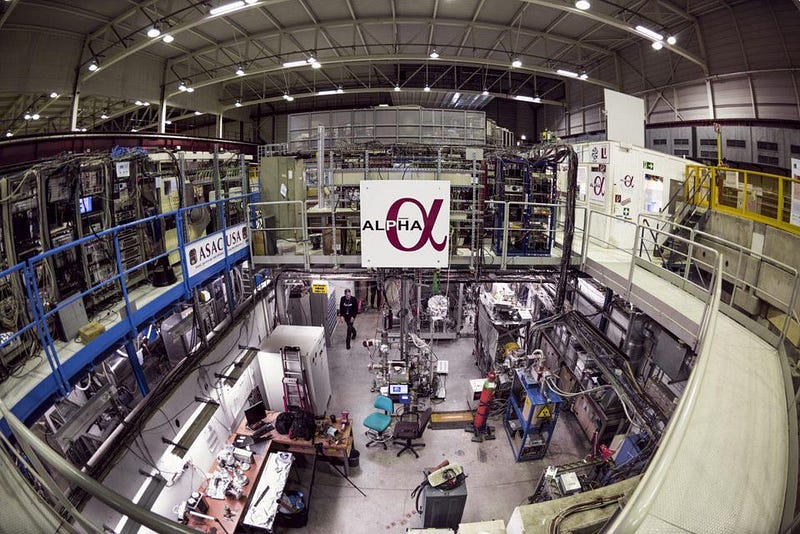
One of the great strides that’s been taken recently is the creation of not just particles of antimatter, but neutral, stable bound states of it. Anti-protons and positrons (anti-electrons) can be created, slowed down, and forced to interact with each other, where they form neutral anti-hydrogen. By using a combination of electric and magnetic fields, we can confine these anti-atoms and keep them stable, away from the matter that would cause them to annihilate.
We’ve successfully held them stable for around 20 minutes at a time, far exceeding the microsecond timescales that unstable, fundamental particles survive. We’ve struck them with photons, discovering that they have the same emission and absorption spectra as atoms. In every way that matters, we’ve determined that antimatter’s properties are exactly as standard physics predicts them to be.
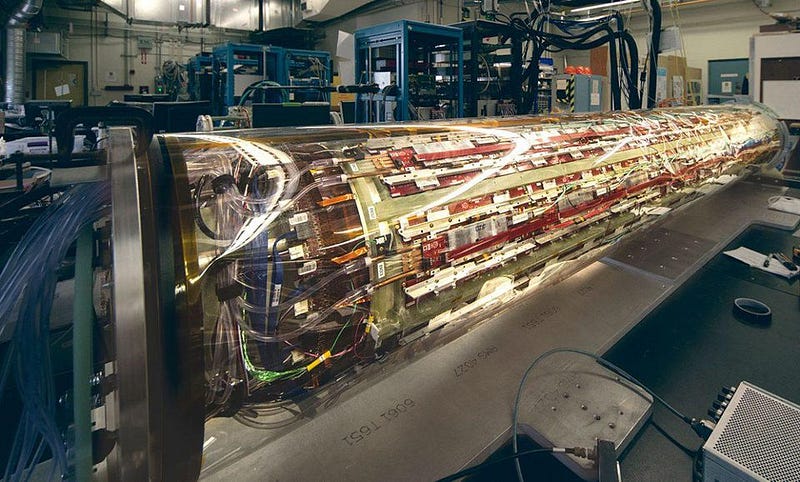
Except, of course, gravitationally. The new ALPHA-g detector, built at Canada’s TRIUMF facility and shipped to CERN earlier this year, should improve the limits on the gravitational acceleration of antimatter down to the critical threshold. Does antimatter accelerate, in the presence of the gravitational field on the surface of Earth, at +9.8 m/s² (down), at -9.8 m/s² (up), at 0 m/s² (no gravitational acceleration at all), or some other value?
From both a theoretical and an applications perspective, any result other than the expected +9.8 m/s² would be absolutely revolutionary.

The antimatter counterpart of every matter particle should have:
- the same mass,
- the same acceleration in a gravitational field,
- the opposite electric charge,
- the opposite spin,
- the same magnetic properties,
- should bind together the same way into atoms, molecules and larger structures,
- and should have the same spectrum of positron transitions in those varied configurations.
Some of these have been measured for a long time: antimatter’s inertial mass, electric charge, spin and magnetic properties are well-known. Its binding and transitional properties have been measured by other detectors at the ALPHA experiment, and line up with what particle physics predicts.
But if the gravitational acceleration comes back negative instead of positive, it would literally turn the world upside down.
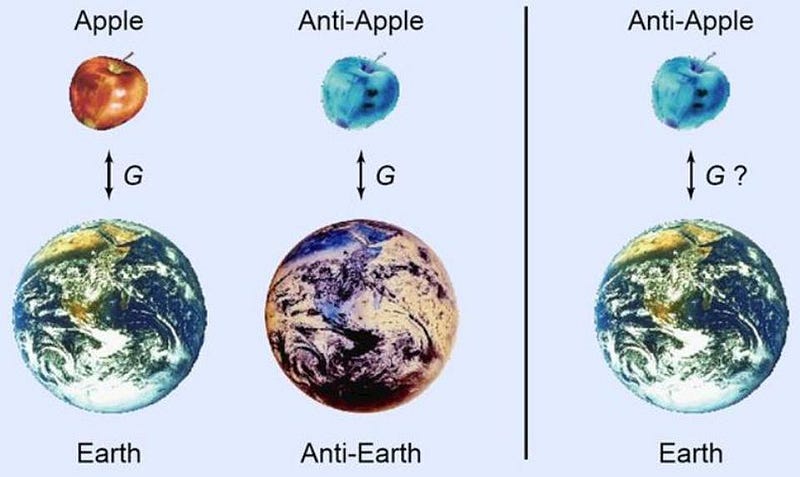
Currently, there is no such thing as a gravitational conductor. On an electrical conductor, free charges live on the surface and can move around, redistributing themselves in response to whatever other charges are around. If you have an electric charge outside an electrical conductor, the inside of the conductor will be shielded from that electric source.
But there’s no way to shield yourself from the gravitational force. There’s no way to set up a uniform gravitational field in a region of space, either, like you can between the parallel plates of an electrical capacitor. The reason? Because unlike the electric force, which is generated by positive and negative charges, there’s only one type of gravitational “charge,” and that’s mass-and-energy. The gravitational force is always attractive, and there’s simply no way around that.
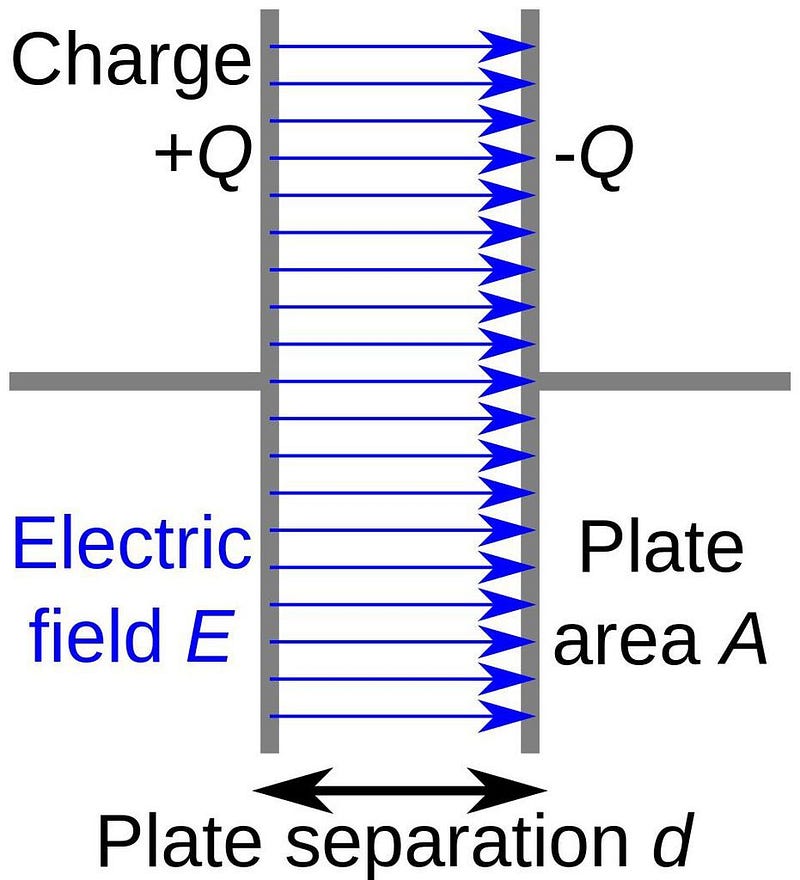
But if you have negative gravitational mass, all of that changes. If antimatter actually anti-gravitates, falling up instead of down, then gravity sees it as though it were made of anti-mass or anti-energy. Under the laws of physics that we currently understand, quantities like anti-mass or anti-energy don’t exist. We can imagine them and talk about how they would behave, but we expect antimatter to have normal mass and normal energy when it comes to gravity.
If anti-mass does exist, though, then a slew of great technological advances, imagined by science-fiction writers for generations, would suddenly become physically possible.

We can build a gravitational conductor, and shield ourselves from the gravitational force.
We can set up a gravitational capacitor in space, creating a uniform artificial gravity field.
We could even create warp drive, since we’d gain the ability to deform spacetime in exactly the way that a mathematical solution to General Relativity, discovered by Miguel Alcubierre in 1994, requires.
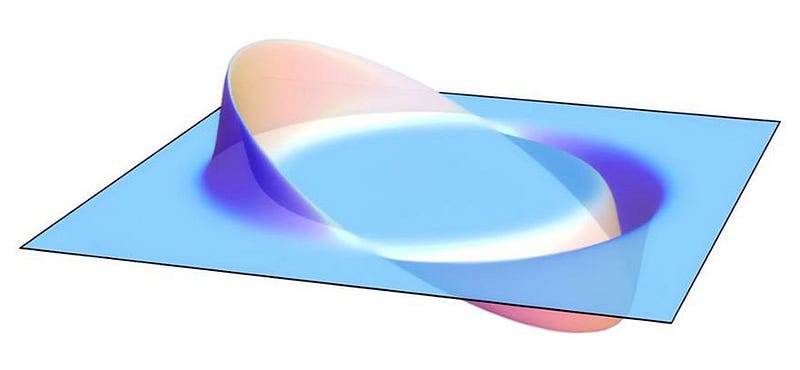
It’s an incredible possibility, one that’s considered wildly unlikely by practically all theoretical physicists. But no matter how wild or tame your theories are, you must absolutely confront them with experimental data; only through measuring the Universe and putting it to the test can you ever accurately determine how the laws of nature work.
Until we measure the gravitational acceleration of antimatter to the precision necessary to determine whether it falls up or down, we must keep ourselves open to the possibility that nature might not behave as we expect. The equivalence principle may not be true for antimatter; it may, in fact, be 100% anti-true. But if that’s the case, a whole new world of possibilities will be unlocked. We could change the currently-known limits of what humans can create in the Universe. And we’ll learn the answer in just a few years through the simplest of all experiments: putting an anti-atom in a gravitational field, and watching which way it falls.
Ethan Siegel is the author of Beyond the Galaxy and Treknology. You can pre-order his third book, currently in development: the Encyclopaedia Cosmologica.





